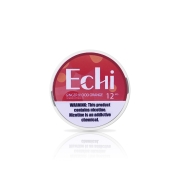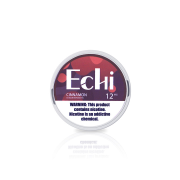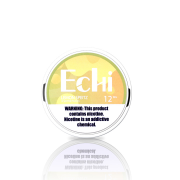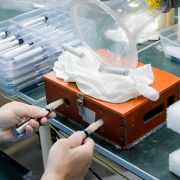The Rise of Nicotine Pouch Brands: A Deep Dive into Manufacturing Processes, Applications, and Market Trends
Nicotine pouches have quickly gained ground as a discreet, smoke-free method of nicotine consumption. For B2B buyers, private label entrepreneurs, and established nicotine brands, a clear understanding of how these products are manufactured, who they’re for, and where the market is heading is essential to stay competitive.
In this comprehensive briefing, we break down the core elements that define modern nicotine pouch brands—from production methods and key differentiators to emerging market trends and strategic opportunities for growth.
Nicotine Pouches 101: Definitions and Industry Terms
Before delving into formulation strategies or procurement tactics, it’s important to define the basics.
What Are Nicotine Pouches?
Nicotine pouches are small, pre-filled sachets designed for oral use. They deliver nicotine without the combustion, odor, or spit typically associated with traditional tobacco products like snus or chew. Most formulations are entirely tobacco-free, made with either tobacco-derived nicotine or synthetic nicotine, and include food-grade fillers, flavorings, and pH stabilizers.
Tobacco-Derived vs. Synthetic Nicotine
-
Tobacco-derived nicotine is extracted from real tobacco leaves and purified for use in pouches.
-
Synthetic nicotine is created in labs without using any tobacco, often marketed as “cleaner” and potentially subject to different regulatory treatment.
Both are viable options depending on your branding strategy and target market.
Inside the Factory: How Nicotine Pouches Are Made
The production of nicotine pouches demands precise formulation, consistency, and compliance. Below is a breakdown of the typical manufacturing workflow:
Step 1: Nicotine Sourcing
-
Tobacco-derived: Extracted through solvent-based or steam distillation methods, followed by purification.
-
Synthetic: Molecularly engineered to replicate nicotine without plant-based origins.
Choosing a trusted nicotine factory or liquid nicotine wholesaler is critical here—purity levels, consistency, and regulatory documentation matter immensely.
Step 2: Blending & Formulation
The nicotine is blended with ingredients such as:
-
Plant fibers for structure
-
Food-safe flavorings (mint, citrus, berry, coffee, etc.)
-
Moisture-retention agents and pH buffers like sodium carbonate
Some premium brands also focus on vegan, organic, or sugar-free claims to boost consumer appeal.
Step 3: Pouch Filling & Sealing
The formulated blend is packed into small, semi-permeable pouches made from cellulose or biodegradable materials. These impact mouthfeel, absorption rate, and environmental positioning.
Step 4: Quality Control
Each batch undergoes lab testing to ensure:
-
Nicotine consistency per pouch (e.g., 2mg, 4mg)
-
Flavor accuracy
-
Moisture content and shelf stability
Batch-level testing helps prevent regulatory issues and protects brand reputation.
Step 5: Packaging & Branding
Pouches are sealed in air-tight cans or containers, then labeled according to regional regulations. For B2B clients, options range from white label solutions with pre-set templates to fully customized OEM packaging tailored to a brand’s identity.
Who’s Winning the Market? A Look at Leading Brands
Several brands have carved out strong positions in the nicotine pouch sector by combining innovation, regulatory agility, and strong consumer marketing.
ZYN
A pioneer in the U.S. market, ZYN (by Swedish Match) offers a wide range of flavors and nicotine strengths. It’s become synonymous with “nicotine pouches” among many consumers.
VELO
VELO targets modern users with tobacco-free, well-branded pouches. Their minimalist design and premium flavors appeal to urban, lifestyle-focused demographics.
Rogue
Known for diversification, Rogue offers pouches, gums, and lozenges—catering to different preferences within the smokeless category.
On!
Geared toward light or first-time users, On! offers small-format pouches with milder nicotine levels—ideal for transitioning smokers.
Nordic Spirit
A Scandinavian-born brand that emphasizes purity, clean taste, and sustainable pouch materials—popular in the EU and increasingly recognized globally.
Applications: Where Nicotine Pouches Fit in the Consumer Ecosystem
Nicotine pouch demand is being driven by multiple overlapping trends. Here’s where the biggest opportunities lie:
Ex-Smokers and Vapers
These consumers are actively looking for reduced-risk products that allow for nicotine intake without combustion or vapor inhalation.
Young Adults
With their sleek packaging, fruit-forward flavors, and low-profile usage, pouches are increasingly adopted by young adults seeking discreet alternatives to cigarettes or vapes.
Health-Conscious Users
Tobacco-free, non-combustible delivery aligns with wellness-focused buyers—particularly in regions where smoking bans or clean air regulations are strict.
Professional and Indoor Users
Nicotine pouches are workplace-friendly. Since there’s no smoke or vapor, they’re ideal for office, travel, or indoor settings.
Common Questions from B2B Clients and Brands
Are nicotine pouches regulated?
Yes. Regulations vary by country. In the U.S., pouches containing synthetic nicotine are now under FDA scrutiny. EU markets may treat them under tobacco-like rules, even if tobacco-free.
Are they safe?
Pouches are generally considered safer than cigarettes due to the lack of combustion. However, nicotine is still an addictive substance and should be used responsibly.
How long does each pouch last?
Users typically experience nicotine effects for 20–45 minutes depending on dosage, formulation, and individual metabolism.
Do pouches cause tooth discoloration?
Far less than traditional tobacco products, but some discoloration may still occur depending on flavor additives and frequency of use.
Trends Shaping the Future of the Nicotine Pouch Industry
As the industry matures, several key developments are reshaping product offerings and market strategies:
-
Sustainable packaging and biodegradable pouches are becoming a selling point.
-
Functional ingredients (e.g., caffeine or adaptogens) are being tested for future formulations.
-
Localized flavor profiles are being developed to cater to regional tastes in Asia, the Middle East, and Latin America.
-
B2B OEM growth is on the rise, with private label brands proliferating in retail, convenience, and vending channels.
This is an opportune moment for new players to enter the market, backed by established nicotine factories and OEM partners capable of scaling production.
Partnering for Growth: Where to Start
If you’re considering launching a nicotine pouch brand or sourcing high-quality pouches in bulk, a reliable manufacturing partner makes all the difference.
SnuffFactory offers full-service OEM and white label nicotine pouch solutions, from nicotine sourcing to branded packaging—ensuring compliance, scalability, and competitive pricing.🔗 Ready to explore product samples or bulk ordering? Get in touch with SnuffFactory today.
Final Thoughts
Nicotine pouches aren’t just a consumer trend—they’re a new frontier in tobacco-free nicotine delivery. Whether you’re launching a new brand, expanding your nicotine product line, or sourcing for retail distribution, understanding the manufacturing process, market dynamics, and strategic suppliers is key.
Stay informed. Choose your partners wisely. And seize the momentum of this high-growth, high-potential category.










Leave a Reply
Want to join the discussion?Feel free to contribute!